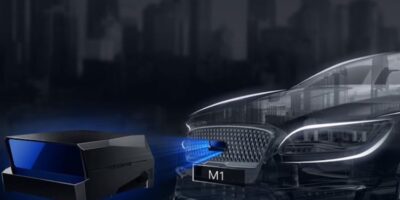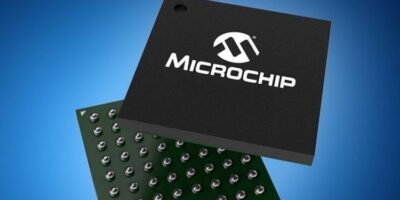At this week’s CES 2019 (8 to 12 January) in Las Vegas, USA, RoboSense will demonstrate an upgraded version of its MEMS solid-state lidar, an automotive grade version designed for the mass production of autonomous vehicles. The RS-LiDAR-M1 has patented MEMS technology and offers vehicle intelligence awareness to a level that fully supports Level 5 driverless automated driving. The company also claims a breakthrough on the measurement range limit based on 905nm lidar with a detection distance to 200m. As a result, says the company, the upgraded optical system and signal processing technology can now clearly recognise even small objects, such as railings and fences.
The first generation MEMS solid-state lidar RS-LiDAR-M1Pre was launched at last year’s CES and was loaded on the Cainiao unmanned logistics vehicle in May 2018. This year the company will be showcasing the potential of its MEMS optomechanical system design, with improvements in detection distance, resolution, field of view (FoV) and reliability.
The RS-LiDAR-M1 MEMS optomechanical lidar provides an increased horizontal field of view compared to the previous generation, reaching 120 degrees FoV; only a few RS-LiDAR-M1s are needed to cover the 360 degrees field of view. It also means that with only five RS-LiDAR-M1s, there is no blind zone around the car with dual lidar sensing redundancy provided in front of the car for a Level 5, i.e. full driverless – driving.
The company believes that the battle between 1550 and 905nm lidar is about cost and performance. When aiming for a low-cost 905nm lidar, it is necessary to overcome the technical difficulties of achieving sufficient measurement range. The RS-LiDAR-M1 achieves what the Robosense describes as a breakthrough on the measurement range limit based on the 905nm lidar, with a detection distance to 200m.
The final output point cloud effect means that the RS-LiDAR-M1 has improved detection capability via the upgraded optical system and signal processing technology, which can now clearly recognise even small objects, such as railings and fences.







